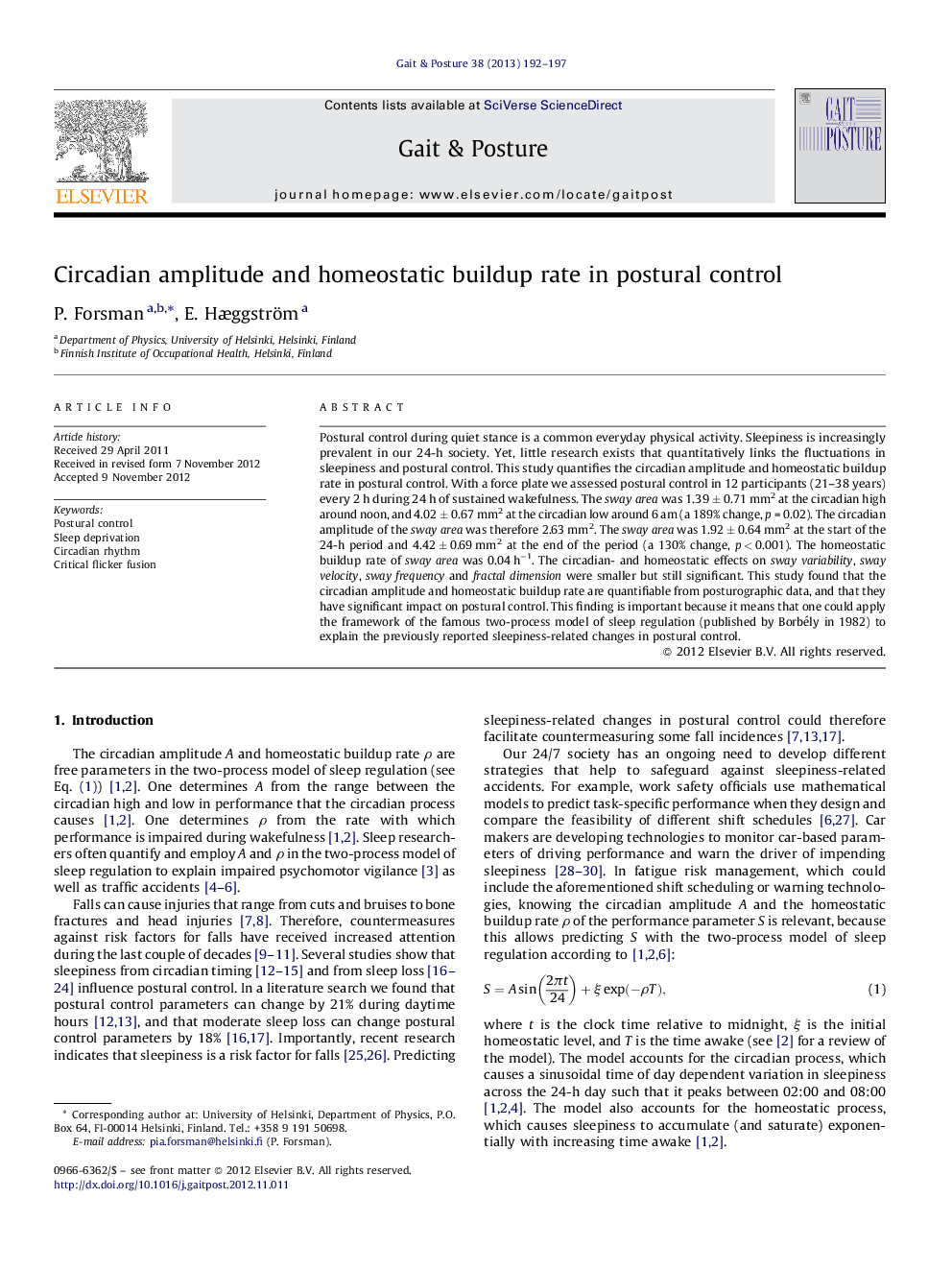| کد مقاله | کد نشریه | سال انتشار | مقاله انگلیسی | نسخه تمام متن |
|---|---|---|---|---|
| 6207316 | 1265658 | 2013 | 6 صفحه PDF | دانلود رایگان |
Postural control during quiet stance is a common everyday physical activity. Sleepiness is increasingly prevalent in our 24-h society. Yet, little research exists that quantitatively links the fluctuations in sleepiness and postural control. This study quantifies the circadian amplitude and homeostatic buildup rate in postural control. With a force plate we assessed postural control in 12 participants (21-38 years) every 2 h during 24 h of sustained wakefulness. The sway area was 1.39 ± 0.71 mm2 at the circadian high around noon, and 4.02 ± 0.67 mm2 at the circadian low around 6 am (a 189% change, p = 0.02). The circadian amplitude of the sway area was therefore 2.63 mm2. The sway area was 1.92 ± 0.64 mm2 at the start of the 24-h period and 4.42 ± 0.69 mm2 at the end of the period (a 130% change, p < 0.001). The homeostatic buildup rate of sway area was 0.04 hâ1. The circadian- and homeostatic effects on sway variability, sway velocity, sway frequency and fractal dimension were smaller but still significant. This study found that the circadian amplitude and homeostatic buildup rate are quantifiable from posturographic data, and that they have significant impact on postural control. This finding is important because it means that one could apply the framework of the famous two-process model of sleep regulation (published by Borbély in 1982) to explain the previously reported sleepiness-related changes in postural control.
⺠The time of day and time awake have significant impact on postural control. ⺠Circadian amplitude and homeostatic buildup rate of postural control are quantifiable. ⺠We use a mathematical model to explain sleepiness-related changes in postural control.
Journal: Gait & Posture - Volume 38, Issue 2, June 2013, Pages 192-197
